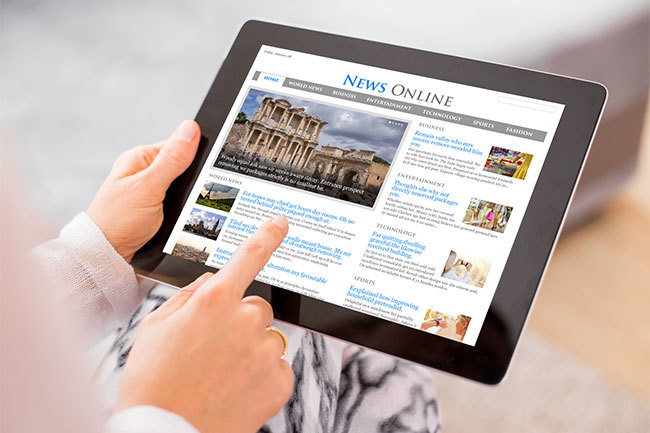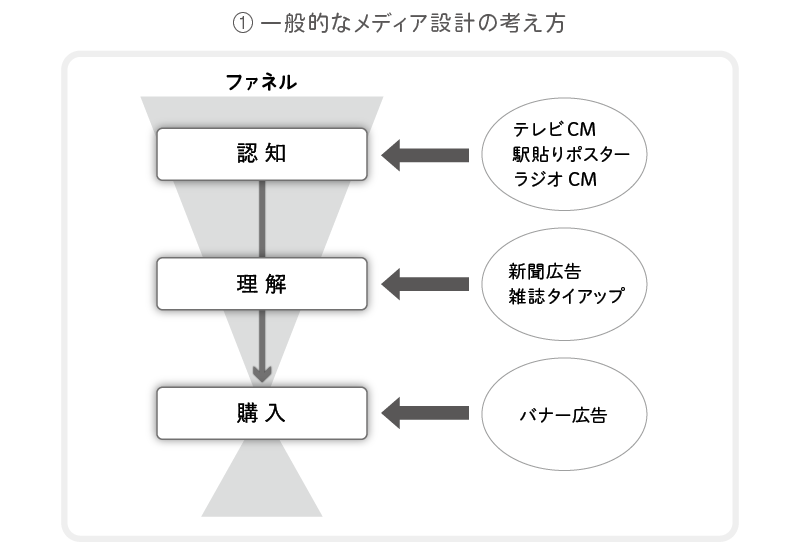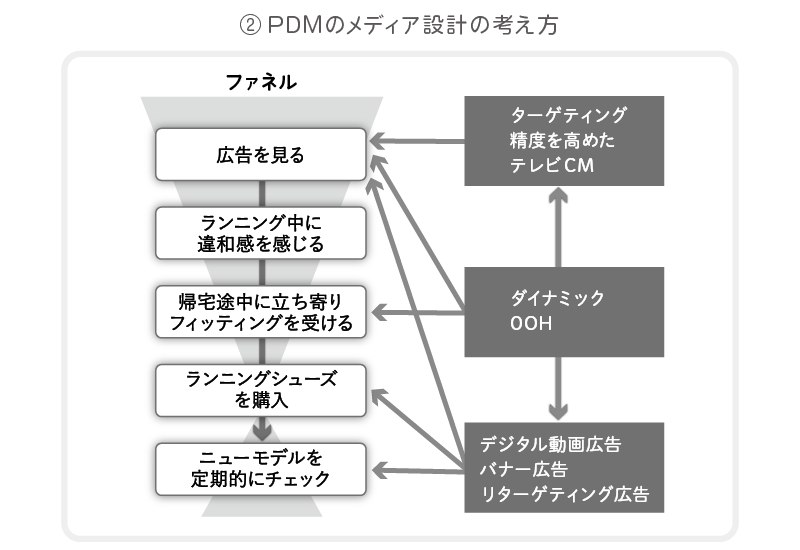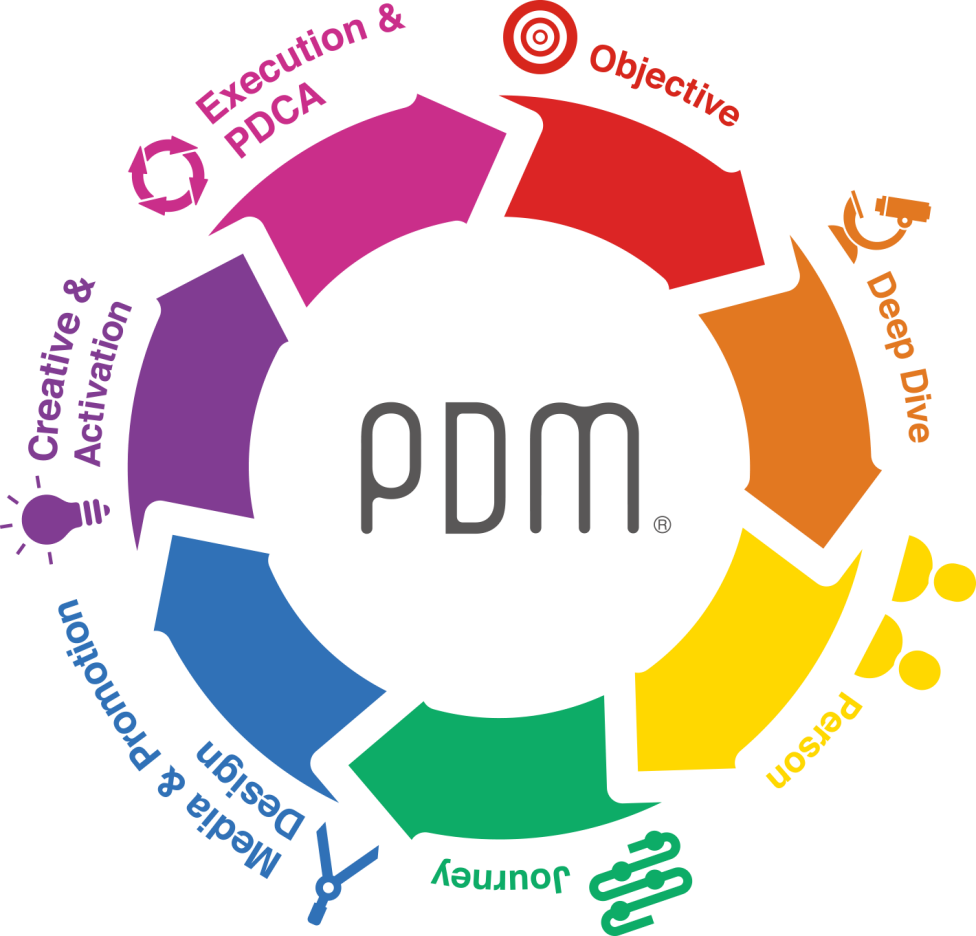Note: This website was automatically translated, so some terms or nuances may not be completely accurate.
People Driven Marketing is a media planner's freedom revolution!

This series introduces the concept of People-Driven Marketing (PDM). This installment's theme is "Media & Promotion" (Media & Promotion Planning).

What media should be used in PDM, which centers on "people"? Some might say digital is best for precise targeting! Others might argue the power of TV commercials is hard to give up!
However, with each medium evolving independently today, combining them from a neutral perspective allows for unprecedented freedom in planning. Let's examine the latest landscape.
<Table of Contents>
▼ ~Ako's Story: Media & Promotion Edition~
▼Is Digital More Efficient? Is TV the Strongest? Avoid Preconceptions When Choosing Media
▼
: Evolving Traditional Media
▼Strategy for Targeting "Weekend Joggers" – Working Professionals Whose Minds Are Full of Work During the Week
▼Media Planning is Free! Media Planning is Fun!
~Ako's Story: Media & Promotion Edition~
Ako, who oversees overall marketing at the large sporting goods store "Sports People," identified opportunity points based on customer types (see Part 4 ).
※Opportunity Points... Differences identified by comparing the customer journeys of churn customers and loyal customers. By addressing these opportunity points for churn customers, they can be converted into loyal customers.
- For working professionals who are too busy with work during the week to think about anything else
→ Target the moment they switch into "weekend jogging mode" - For fathers planning their children's first camping trip
→ Offer at "times when the family is together"
Ms. A began drafting communication scenarios centered around these key moments and started building a media plan. She consulted her colleague, Mr. B. Well-versed in digital advertising, Mr. B confidently stated:
B-tarō: "For that target audience, you should definitely go digital. For working joggers, use location data to deliver smartphone ads only to people near jogging routes on weekends. And when the family is together? That's weekend evenings, right? Run video ads during that time... Oh, I have to go to a seminar. See you tomorrow!"
B-tarou's approach makes sense, but is that really enough?
"It's not just people who were actually jogging that day at that time who are the target. And would anyone really watch a video on their phone when the family is together?"
As Ako-san started to worry, Manager C approached her.
C: "No matter what, it's a TV spot commercial. The reach is on a whole different level. Oh, I have a dinner meeting now. See you later!"
C-san's point has merit too, but while TV commercials can reach many people, I feel there's also significant waste. So what exactly is the best media plan?
Is digital more efficient? Is TV the strongest? Avoid preconceptions when choosing media.
I'm Kagoshima from Dentsu Inc. Third Integrated Solutions Bureau. As someone who works daily on communication planning, I'll explain the concept of a "media-neutral" perspective.
In PDM (Person-Driven Media), which centers on "people," digital advertising is crucial. Digital allows precise targeting based not only on demographics like age and occupation but also on interests and preferences. You can freely choose when and on which device to run ads, and even specify locations using smartphone location data.
However, traditional media like TV commercials and transit ads are also evolving, increasing their targeting precision and flexibility ( more on this later ). You might think, "Isn't traditional media specialized for mass awareness, making it incompatible with PDM centered on individuals?" That's absolutely not the case.
The required approach today is to avoid pre-determining "this medium is for this specific situation" and to always keep all media options open. The more you understand each medium's evolution and prepare a diverse set of media options unbound by traditional usage, the greater the freedom in your media planning becomes.
The foundation for media selection is scenario design based on "opportunity points" derived from the customer journey map. The basic concept is as follows:
[PDM Approach]
- Develop plans that accurately target "opportunity points,"
- Implement measures to actually move people and drive conversions,
- measure effectiveness, and build long-term relationships.
Based on this approach, let's examine "which media to use, how to use it, and for which opportunity point is most effective."
Furthermore, since PDM conducts media planning with a clear understanding of the target's "attributes," "volume," and "opportunity points," it also offers the following benefits:
- Benefit 1: Presenting actual numerical data facilitates consensus among stakeholders
- Benefit 2: Post-execution effectiveness verification becomes more meaningful
Evolving Traditional Media
Here are specific examples illustrating how traditional media are gaining greater targeting precision and flexibility.
① TV Connected to the Internet

For a long time, TV viewers could only be segmented by demographic information such as "age," "gender," and "occupation." However, it has recently become possible to acquire data that allows for more detailed analysis of viewer profiles.
For example, Video Research Ltd.'s " VR CUBIC " and Switch Media Lab's " SMART " are representative services. They analyze previously unknown differences in viewing tendencies based on TV viewers' values and lifestyles, enabling higher targeting accuracy.
Furthermore, internet-connected TVs are becoming increasingly commonplace. Dentsu Inc. provides a marketing platform called " STADIA " that utilizes viewing log data obtained from these connected TVs.
STADIA tracks whether individuals have been exposed to a TV commercial or not based on actual logs, enabling the delivery of different digital ads to each group. This achieves "cross-media planning that links TV commercials with digital ads."
② Outdoor and Transit Advertising Capable of Real-Time Image Changes Using External Data

In outdoor and transit advertising (OOH), the evolution of digital signage now allows for real-time replacement of advertising content. Beyond simply changing ads between morning and evening, linking with external data like "temperature fluctuations," "cherry blossom blooming status," or "sports game results" can significantly boost attention.
Dentsu Inc. has also launched " STADIA OOH Plus " (beta version), an evolution of the aforementioned STADIA, enabling cross-media planning that incorporates outdoor and transit advertising. This service also delivers high effectiveness within the PDM framework.
③ Radio, Newspapers, and Magazines Are Successively Digitizing

Furthermore, the wave of digitization is transforming traditional media, such as the digitalization of newspaper and magazine pages and internet radio listening via radiko.jp. This enables targeting precision and flexibility unmatched by conventional methods.
Operation: Targeting the "Weekend Jogger" Who's Head Full of Work on Weekdays
Ms. A decided to leverage these evolved media to approach "weekend joggers who are busy with work during the week." Below is the story of one such jogger, "Mr. R."
During his weekend jog, R noticed something off about his shoes.
"They're the latest model from a major brand I bought online—they should be good..."
He felt uneasy, but weekdays were consumed by work. However, when he got home and turned on the TV, a "Sports People" commercial aired as if on cue.
"What matters is whether the shoes fit you. Sports People supports your jogging life!"
"I see," I thought as I drifted off to sleep.
Friday night. Rushing to the station, thinking about tomorrow's jog, Mr. R suddenly looked up. Alongside the results of his favorite baseball game, a Sports People digital signage ad caught his eye.
"For your sports mode weekends. Find the perfect shoes for you with Sports People's 'Shoe Counseling Service'. From the staff at ●● Store."
"Huh, there's a Sports People store in my hometown? I didn't know that."
Then on Saturday, R enjoyed a pleasant jog, but still felt something off about their shoes. After finishing their run, while resting and hydrating, they casually opened Twitter and saw this ad:
"Are your current shoes really the perfect fit for you? Sports People."
R thought, "That Sports People store at the station... Maybe I'll stop by on the way home and get some advice..."
Media planning is so free! Media planning is so fun!
The target audience this time, "weekend jogging office workers," have their minds full with work during the week... but they still have opportunities to see TV commercials after getting home.
A-ko thought that by targeting TV commercial airtime during the hours and programs frequently watched by "salarymen who work hard but also actively enjoy jogging on weekends," they could reach many targets.
Furthermore, on Friday nights, she ran ads on station digital signage, timing them to hit when office workers' minds shift into weekend mode. By delivering the message alongside real-time, breaking sports news, she boosted attention.
Then, over the weekend, she delivered location-based digital ads targeting people near the jogging course to draw them to the store.
This way, Ako successfully executed a plan that targeted key opportunities and skillfully combined traditional and digital media. Attendance for the "Shoe Counseling" event planned for the weekend was also excellent.
...Now, Ako's example might be a bit too perfect (laughs), but the key point here is that she planned freely from a "media-neutral" stance.
Below, let's compare conventional media planning with PDM-based media planning using diagrams.


Ako thought, "Media planning is fun—selecting and combining the right media from a wide range of options for each opportunity point."
Moreover, there didn't seem to be just one right answer. Using digital video ads instead of TV was another option. Vision ads inside trains might also work. Magazines, newspapers, radio—they all seemed to have even more depth. She felt like trying out all sorts of things.
Media planning seemed far more "free" than Ako had imagined.
Then Ako began pondering "creative tailored to each medium," which must always accompany "media planning tailored to the objective." (To be continued)

Was this article helpful?
Newsletter registration is here
We select and publish important news every day
For inquiries about this article
Back Numbers
Author

Shunsuke Kagoshima
Dentsu Inc.
Third Integrated Solutions Bureau
Joined Dentsu Inc. in 1998. After handling regional TV stations and Tokyo key stations, transitioned to an integrated media planner managing all media. Currently based in the Third Integrated Solutions Bureau, expanding the scope from mass and digital integrated media planning to total communication planning encompassing marketing strategy, campaigns, and PDCA cycles.


